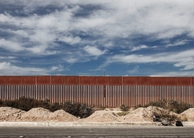Senior officers recognise the profit motive behind many serious crimes. They also understand its corresponding utility for disrupting criminal enterprise as well as any academic or international body may express it, as, for example, "with few alternatives available in which to convert illicitly gained funds into a usable commodity, money laundering by virtue of what it achieves is in effect the pinnacle of all organised crimes and almost certainly [also] the 'Achilles heel' of criminal activity" (FATF, 2012; Gilmour, 2014, p. 37).
In 'follow the money' crime prevention activities focused squarely on the criminal ‘Achilles heel’, some senior enforcement officials frankly accept that the '5 drivers’ may not be criminally causative. They recognise that the acquisition of money and assets - in short, profit - is a key motivating factor driving a significant amount of serious offending:
[The 5 Drivers of Crime are] not really drivers of crime. Profit is a big motivator for a lot of serious crime: drugs, fraud, others, yet it doesn’t feature on the list. Frontline police still focus more on the product (the drugs) rather than what’s really driving that crime in the first place. It is slowly changing, but it’s a huge mindset shift (Anon, 2014).
The lure of money [is] the ‘invisible sixth driver of crime’ and… can often be overlooked in the course of regular investigations (Brook, 2014).
Since we spoke a few weeks ago, I’ve socialised with quite a few people the idea that The 5 Drivers might not be the real drivers of crime in the sense of actually being the cause of much serious crime. No-one yet has disagreed. This could be one of the worst kept secrets in Police and [other agencies] involved with crime prevention and asset forfeiture (Anon, 2015b).
Another senior officer, in the presence and with the assent of colleagues, said:
Most police think money laundering is too complex and have been told to focus on ‘drivers of crime’, eg drugs, so there's still a heavy focus on product [drugs], but in fact money is a big driver of crime, including drugs and other serious crimes, so that should be a bigger focus (Anon, 2015a).
Similar observations have been made elsewhere regarding the potentially adverse effects of police guidelines seemingly dismissive of the significance of the profit motive relevant to a significant amount of serious offending. In England for example, police reported a lack of knowledge about money laundering ("what we know about it is only stuff we pick up in everyday life, eg films"). They also reported relatively little 'frontline' pressure to tackle the causes of serious financially-motivated offending ("there are no targets for money laundering. That sends a message that it's not as important for example as burglary or auto crime") (Davidson & McGill, 2013, p. 34).
Although not a primary element of The 5 Drivers of Crime, the profit motive behind many serious crimes is nonetheless recognised in practice by police, government, and the courts. For example:
- In a 2010 report (Organised Crime in New Zealand), NZ Police noted that organised criminal groups are "entrepreneurial" and involved at "every step" of the illegal drugs trade as "the most significant driver of profit for organised crime". The report added that "organised crime is financially motivated", and that "the primary aim of organised criminal activity is the pursuit of profit" (NZ Police, 2010, pp. 4, 7, 9, 12, 15).
- A 2011 government report, Strengthening New Zealand's Resistance to Organised Crime, asserted that "[removing] profit from crime" is key: "organised crime persists in part because it is profitable" (MOJ, 2011, pp. 14, 17).
- In late 2014 a "whole-of-government action plan" presented to Cabinet "to reduce the harms caused by ... gangs and transnational crime groups" plainly expressed that "transnational crime groups dominate the market in the illicit importation of methamphetamine precursors,... and profit is a key motivator". Many of the recommended strategies to detect and prevent crime focus expressly on profit-seeking activities. These include strengthening asset recovery enforcement and targeting criminal finance and the legitimate businesses such as professionals who knowingly or inadvertently facilitate criminal financing (Cabinet, 2014, pp. 4-5).
- In sentencing one of the leaders of a group responsible for the largest quantity of pseudoephedrine imported into New Zealand, the judge noted that Mr Zhang was "driven by greed". He inferred from "astute management of a major drug-dealing enterprise" and that intercepted precursor chemicals could produce methamphetamine valued at up to $116 million that Mr Zhang made “huge personal profits" ("R v Zhang & Ors," 2015, pp. 9, 11).
An earlier United Nations assessment noted that "without financial flows emerging from drug trafficking and other transnational organized crime activities, most transnational crime would not take place" (UNODC, 2011, pp. 13, 99). Similarly in relation to other criminal proceeds. The Financial Action Task Force says "without a usable profit, the criminal activity will not continue" (FATF, 2012; Also Murray, 2011, p. 8). If these views are accurate, it is hard to conceive a more powerful causative descriptor than criminal activity that would not occur in its absence. Severing the causes of offending is the pinnacle of crime prevention policy effectiveness, and goes directly to core policy objectives of the Prevention First operating strategy, and the Policing Excellence and Better Public Services crime reduction targets. The concept of money as a possible causative driver of crime and money laundering as its essential companion is, however, missing from the ‘drivers of crime’ headline factors.
The 5 Drivers of Crime was by 2014 firmly entrenched as representing the underlying causes of offending, as recorded in a series of official documents, noted above. In a diagrammatic representation in the Policing Excellence retrospective published in November 2014, however, 'profit motivation' also appeared, albeit absent explanation, and restricted to the 'organised crime and drugs' element (NZ Police, 2014b, p. 25). But if profit is an important causative driver of many serious crimes - recognised by police, the courts and government - it is surprising that in the construct purportedly encapsulating the causes of offending it is merely a subset of a cobbled together form of criminal enterprise and illicit commodity; not itself a 'driver of crime'.
If the five elements of the ‘drivers of crime’ properly reflect the underlying causes of much offending, overlooking other causative factors may not matter much. It may simply reflect a policy direction or deployment focus on particular causes of offending and victimisation over others. However, if, as contended, The 5 Drivers of Crime does not accurately reflect criminal causation, a focus on five areas correlated with crime as if they represent the underlying causes of offending risks sub-optimal outcomes, particularly if factors arguably causative are excluded.
A recent example reveals the potential impact of a focus on a particular element of criminal activity at the expense of other crime arguably more harmful. With intense political and media focus on outlaw motorcycle gangs (albeit representing only 0.52% of crime), the Queensland Organised Crime Commission of Inquiry found that enforcement agencies “lost visibility” of more extensive serious offending which caused “severe” and “profound” economic and social effects (Byrne, 2015). NZ Police has clearly not lost visibility of serious offending, and senior officers accept that The 5 Drivers of Crime is not causative of criminal offending, as noted above. However, labelling a subset of acknowledged factors correlated with crime as purportedly causative of offending, and excluding others that may arguably be causative, risks elevating their perceived importance beyond ‘priority areas’ for early action, and risks diverting focus and resources from more effective crime prevention activities and better outcomes.
Without the powers of a formal investigation process such as a Commission of Inquiry, it is beyond the scope of this article to suggest that there was any such diversion of focus or resources from arguably more effective crime prevention activities. There is, however, evidence of a concentration of resources on five factors purportedly representing “the underlying causes of offending and victimisation.” For example, the 'drivers of crime':
- is a key element of leadership ethos, for existing and aspirant leaders:
The 2014 Statement of Intent records that "Police will have leaders who actively pursue what's most important", that changes implemented under the Policing Excellence program and Prevention First operating strategy "have supported our focus on the five drivers of crime … and this is an area in which the "Police Executive provides direction,.. [and is] communicated to all staff" (NZ Police, 2014c, p. 43).
- has been recognised in a formal review of police performance:
Changes implemented have supported its focus on the five drivers of crime – alcohol, families, youth, road policing, and organised crime and drugs (SSC, Treasury, & DPMC, 2014, p. 5)
- is seen as contributing to performance:
A 13% reduction in recorded crime [was achieved] through a focus on the ‘crime triangle’ (victims, offenders, locations), the 5 drivers of crime, and a 19% reduction in prosecutions (NZ Police, 2014b, p. 59).
- is regarded an important element for achieving high-level outcomes:
Prevention First [and] Policing Excellence ... will deliver better outcomes for New Zealanders through a continued focus on improving outcomes for victims, targeting the drivers of crime, and improving community reassurance through deployment of staff to the right time, place, and people (NZ Police, 2014c, p. 47).
- has been embedded into strategic frameworks:
A 'drivers of crime' strategic intelligence assessment has … been finalised (SSC et al., 2014, p. 7).
- is expressed at the core of priority activities to reduce crime:
Priority 3: Less crime:.. Police is targeting its action to the drivers of crime: youth, alcohol, organised crime, dysfunctional families, and high-risk driving behaviours (NZ Police, 2014c, p. 19).
- is used to concentrate effort:
Prevention First provides police with the means to remain tough on criminal offending while reducing victimisation by concentrating effort on the underlying drivers of crime, in tandem with tactical interventions aimed at preventing crime before it occurs (NZ Police, 2014b, p. 18).
The five drivers of crime are set for even closer attention now the National Tactical Plan is in place. The plan … will guide district staff as they develop local tactics to crack down on the main causes of crime and victimisation. “Alcohol, families, organised crime and drugs, road policing and youth make up the five drivers of crime,” says Deputy Commissioner Operations, Mike Bush… If we are to achieve our Prevention First goals, we have to focus our attention on these drivers” (Bush, 2013).
- is used to explain the success of the Prevention First national operating strategy:
Prevention First has driven change in results through four key components, [including] understanding and responding to the drivers of crime, addressing the underlying causes of offending and victimisation – families, youth, alcohol, and organised crime and drugs (NZ Police, 2014a).
- influences tactical decision making:
Tactics employed by [Neighbourhood Policing Teams] include ... community engagement and participation in setting agreed local priorities that align with police priorities, ie tackling the drivers of crime with a focus on addressing the underlying causes of crime and safety problems (NZ Police, 2014b).
- is at the core of tactical planning:
District Command Centres provide deployment managers "with a real-time, big-picture overview of how best to deploy resources to beat demand and prevent crime", and "supervisors use their District Tactical Plan (which outlines the tactics to be used to combat the 5 drivers of crime)" (NZ Police, 2014b, p. 49).
- appears throughout operational guidelines:
Policing Excellence Programme Charter: The general approach for dealing with identified problems is through interventions that focus on the 5 drivers of crime, namely youth, alcohol, families, organised crime and road policing (NZ Police, 2013a, p. 18).
The Good Practice Index[is an] evidence-based online database to keep staff informed about what works, what might work and what doesn’t work in policing. [The GPI] aligns with the focus on evidence-based policing [and grades tactics] with a lightbulb icon to indicate their effectiveness in preventing or reducing crime or fear of crime, [and it helps make Police] smarter in understanding the drivers of crime (Evans, 2015a).
- prompted a new national Policing award:
Judged by a member of the Police Executive, assisted by frontline staff and visiting academics, the Excellence in reducing harm from the drivers of crime award is one of four awards that "recognises and rewards Police staff for excellence in addressing long term sustainable crime prevention and reduction" (Evans, 2015b).
- is embedded as one of the 'primary messages' instructed to be incorporated in police communications, ie that:
Our officers are more efficient and effective, and doing the job they signed up for - in short, targeting the drivers of crime (NZ Police, 2014b).
- may cause other ‘drivers’ to be overlooked:
Detective Inspector Paul Hampton, who manages the [Asset Recovery units] within the Financial Crime Group at Police National Headquarters calls the lure of money the ‘invisible sixth driver of crime’ and says it can often be overlooked in the course of regular investigations (Brook, 2014).
- may undermine or under-record crime prevention efforts in relation to important ‘drivers’ of crime not listed:
What gets measured gets done. When a police officer visits licenced premises, it’s coded as ‘prevention’. Alcohol is one of the 'drivers of crime'. However, nearly identical activities that might detect or deter serious profit-motivated crime [example given] are classified 'investigation'. Money obviously drives much serious crime, but it's not on the list (Anon, 2015a).
This article does not suggest that focusing on any of the factors in The 5 Drivers of Crime quintet is wrong, particularly if it simply reflects operational concentration on important areas correlated with offending and selected by policymakers as ‘initial priority areas’. It is contended, however, that focusing on The 5 Drivers of Crime as if it represents the underlying causes of offending risks diverting resources from the prospect of achieving better results. In selecting activity and output measures with the greatest bearing on outcomes, mischaracterising correlation for causation matters. A ‘drivers of crime’ construct may be a useful way to focus effort and resources, but labelling it causative risks elevating the perceived crime prevention validity and capability of its constituent factors beyond the scientific evidence-base. It also risks systemically undervaluing the crime prevention capability and significance of other factors, including some which may have some direct causal relation with serious offending.
This article does not make a value judgment about the relative importance of the constituent factors of The 5 Drivers of Crime, whether as between themselves or compared with other factors that may have a material impact on crime. There is, however, evidence to suggest that Detective Inspector Hampton’s “invisible sixth driver” of financially-motivated ‘economic’ crime (Brook, 2014) represents a significant area of serious offending. For example:
- Non-economic crime. Assuming that the Police Commissioner’s reference to the estimated costs of crime to society "in excess of $11 billion per annum" (NZ Police, 2012a, p. 3) includes similar proportions of economically-motivated crimes as detailed in New Zealand Treasury’s earlier cost of crime report (Roper & Thompson, 2006), the total estimated cost of “non-economic” crimes (offences against the person, such as violent and sexual offences and robbery, together with property damage and drug and serious traffic offences), may be roughly in the order of $6.9 billion annually, or $9.6 billion if the costs of theft and burglary are included.
- Economic crime. Although not formally published, the Minister then responsible for the Serious Fraud Office confirmed that “many Ministries had been working for two years on a Cost of Economic Crime report” (Nippert, 2013) which reportedly provisionally estimated the cost of ‘economic’ crimes such as fraud and tax evasion as between $6.1-$9.4 billion per year (Rose, 2014; Serious Fraud Office, 2012), or between $8.7-$12 billion if the costs of theft and burglary (from above) are included.
These reports use different methodologies, with likely under- and over-counting in both. But whatever the ‘correct’ figures, it is at least plausible that the cost of the “equally damaging” (MOJ, 2009b, p. 43) effects of white-collar crime represented by the “invisible sixth driver” may be broadly similar to the total cost of blue-collar crime on which ‘the 5 drivers’ appears mostly to focus. Omitting important factors arguably causative from a construct purportedly reflecting “the underlying causes of offending and victimisation” risks misaligning crime prevention activities and objectives. As Professor Levi remarked in relation to the shelved Cost of Economic Crime report, “the headline figure [is] not as important as the ability to prioritise which crimes to target” (Rose, 2014).
The intention to establish "a new approach to reducing offending and victimisation by working more effectively across government to address the underlying drivers of crime" (Cabinet, 2009, p. 1; 2010, p. 1) and the transformation into an evidence-based organisation that "puts prevention at the front of what Police do" (NZ Police, 2014c) are laudable aims. Even inspirational. The preceding commentary and following suggestions are offered in that context, constructively supporting effective crime prevention interventions.Continued on Next Page »
ACC. (2015). The costs of serious and organised crime in Australia 2013-2014. Retrieved from Canberra, ACT, Australia: http://www.crimecommission.gov.au/publications/intelligence-products/costs-serious-and-organised-crime-australia-2013-14
Anon (2014, 11 March 2014). [Informal unstructured interview: Drivers of crime, gatekeeper involvement, police culture].
Anon (2015a, 26 August 2015). [Informal unstructured interview: Drivers of crime, ML & professionals, ML research].
Anon (2015b, 6 November 2015). [Informal unstructured telephone discussion: Drivers of crime not causative 'worst kept secret'].
Australian Institute of Criminology. (2012). National crime prevention framework. Retrieved from http://aic.gov.au/crime_community/crimeprevention/ncpf.html
Banks, C., Maloney, E., & Willcock, H. (1975). Public attitudes to crime and the penal system. The British Journal of Criminology, 15(3), 228-240. Retrieved from http://www.jstor.org/stable/23636156
Beard, M. (2007). Roman Triumph. Cambridge, MA, USA: Harvard University Press.
Brook, E. (2014). Spotlight on,... the Asset Recovery Unit. Police News, 47(2). Retrieved from http://www.policeassn.org.nz/newsroom/publications/featured-articles/spotlight-on%E2%80%A6-asset-recovery-unit
Brown, S. E., Esbensen, F.-A., & Geis, G. (2010). Criminology: Explaining crime and its context Retrieved from http://www.eblib.com Retrieved from http://www.eblib.com
Bush, M. (2013). Brakes go on drivers of crime. Ten One(365). Retrieved from http://tenone.police.govt.nz/tenone/January13National3.htm
Byrne, M. (2015). Queensland Organised Crime Commission of Inquiry. Retrieved from https://www.organisedcrimeinquiry.qld.gov.au/__data/assets/pdf_file/0017/935/QOCCI15287-ORGANISED-CRIME-INQUIRY_Final_Report.pdf
Cabinet. (2009). Cabinet Paper. Addressing the drivers of crime. Wellington, NZ: New Zealand Government Retrieved from http://www.justice.govt.nz/justice-sector/drivers-of-crime/publications-and-background-information/documents/Addressing%20the%20Drivers%20of%20Crime%20Cabinet%20paper.pdf.
Cabinet. (2010). Cabinet Paper. Addressing the drivers of crime: progress and opportunities. Wellington, NZ: New Zealand Government Retrieved from http://www.justice.govt.nz/justice-sector/drivers-of-crime/publications-and-background-information/documents/Dec%20Cab%20paper%20for%20website.pdf.
Cabinet. (2012a). Cabinet Paper. Better public services results: targets and public communication. Wellington, NZ: New Zealand Government Retrieved from http://www.ssc.govt.nz/sites/all/files/bps-cab-paper-results-targets-25june2012_0.pdf.
Cabinet. (2012b). Cabinet Paper. Drivers of Crime. Investment package for alcohol and other drug assessments and interventions - implementation plan. Wellington, NZ: New Zealand Government Retrieved from http://www.justice.govt.nz/publications/global-publications/d/drivers-of-crime-investment-package-for-alcohol-and-other-drug-assessments-and-interventions-2013-implementation-plan-cabinet-paper.
Cabinet. (2014). Cabinet Paper. Whole-of-government action plan to reduce the harms caused by New Zealand adult gangs and transnational crime groups. Wellington, NZ: New Zealand Government Retrieved from http://www.police.govt.nz/sites/default/files/publications/cabinet-paper-whole-of-govt-action-plan-to-reduce-harms-caused-by-adult-gangs-and-transnational-crime-groups.pdf.
Campbell, A., & Muncer, S. (1990). Causes of crime: Uncovering a lay model. Criminal Justice and Behavior, 17(4), 410-419. doi:10.1177/0093854890017004002
Cantor, N. (1933). The causes of crime. Journal of Criminal Law and Criminology (1931-1951), 23(6), 1029-1034. doi:10.2307/1136079
Civilian Secretariat for Police. (2015). Draft white paper on safety and security: notice for public comments. Government Gazette: Republic of South Africa Retrieved from http://www.gov.za/sites/www.gov.za/files/38526_gen178.pdf.
Clarke, R. V. (2004). Technology, criminology and crime science. European Journal on Criminal Policy and Research, 10(1), 55-63. doi:10.1023/B:CRIM.0000037557.42894.f7
Coleman, J. W. (1992). Crime and money motivation and opportunity in a monetarized economy. The American Behavioral Scientist, 35(6), 827-836. Retrieved from http://search.proquest.com.libraryproxy.griffith.edu.au/docview/194894102?accountid=14543
Crime Prevention Action Group. (1992). Strategy paper on crime prevention: Report on the the preliminary stage of analysis. Retrieved from Wellington, NZ:
Crime Prevention Action Group. (1993). Strategic management of government crime prevention activities: CPAG Phase II interim report. Retrieved from Wellington, NZ:
Crime Prevention Unit. (1993). The New Zealand Crime Prevention Strategy. Retrieved from Wellington, NZ:
Crimes Act, 1961 No 43 Stat. (1961 1 November 1961).
Cullen, F. T., Clark, G. A., Cullen, J. B., & Mathers, R. A. (1985). Attribution, salience, and attitudes toward criminal sanctioning. Criminal Justice and Behavior, 12(3), 305-331. doi:10.1177/0093854885012003003
Davidson, I., & McGill, G. (2013). Follow the money: tackling money laundering to reduce organised crime. Paper presented at the Policing organised crime: changing landscape, changing practice conference. http://www.police-foundation.org.uk/uploads/holding/annual_conference/follow_the_money.pdf
Dills, A. K., Miron, J. A., & Summers, G. (2008). What do economists know about crime? Retrieved from Cambridge, MA, USA: http://www.nber.org/papers/w13759
Durant, W. (1949). The story of philosophy: the lives and opinions of the greater philosophers (2 ed.). New York, USA: Simon and Schuster.
Evans, M. (2015a, July 2015). Guide to good practice. TenOne.
Evans, M. (2015b). Top POP Cops head to Christchurch for final. Retrieved from http://www.police.govt.nz/news/release/top-pop-cops-head-christchurch-final
FATF. (2012). FAQ: Money laundering. Retrieved from http://www.fatf-gafi.org/pages/faq/moneylaundering/
Fréchette, L. (2000). No country alone can cope with growth of transnational crime, says Deputy Secretary-General to Vienna Crime Congress [Press release]. Retrieved from http://www.un.org/press/en/2000/20000406.dsgsm92.doc.html
Ganley, E. (2015, 28 September 2015). Human trafficking in refugees: Smugglers rule camps in northern France. CDC News. Retrieved from http://www.cbc.ca/m/touch/world/story/1.3246532
Gilmour, N. (2014). Understanding money laundering - a crime script approach. The European Review of Organised Crime, 1(2), 35-56. Retrieved from http://sgocnet.org/site/wp-content/uploads/2014/06/Gilmour_3_35-56.pdf
Gilmour, N., & Ridley, N. (2015). Everyday vulnerabilities – money laundering through cash intensive businesses. Journal of Money Laundering Control, 18(3), 293-303. doi:10.1108/JMLC-06-2014-0019
Graham, J., & Bennett, T. (1995). Crime prevention srategies in Europe and North America Retrieved from
Hagan, F. E. (2007). Introduction Introduction to criminology: Theories, methods, and criminal behavior (6 ed.). UK: Sage Publications, inc.
Hagan, F. E. (2011). Introduction to criminology: Theories, methods and criminal behaviour (7 ed.): Sage Publications, Inc.
Home Office. (2015). Opportunity/security as a driver of crime: a discussion paper. Retrieved from https://www.gov.uk/government/uploads/system/uploads/attachment_data/file/398865/Opportunity_security_final_v2.pdf
Hutt News. (2015, 15 September 2015). Meth addict terrorises. Hutt News. Retrieved from http://huttnews.realviewdigital.com/?iid=127970&startpage=page0000034#folio=34
ICPC. (2014). Crime Prevention and community safety: Trends and perspectives. Retrieved from Montréal, Québec, Canada: http://www.crime-prevention-intl.org/en/publications/report/report/article/4th-international-report-on-crime-prevention-and-community-safety.html
Laycock, G. (2005). Defining crime science. In M. J. Smith & N. Tilley (Eds.), Crime science: New approaches to preventing and detecting crime (pp. 3-24). Cullompton, Devon, UK: Willan Publishing.
Lewis, C. S. (1942). The screwtape letters. UK: Geoffrey Bles.
McFadden, M., O'Flaherty, M., Boreham, P., & Haynes, M. (2014). Targeting the profits of illicit drug trafficking through proceeds of crime action. Retrieved from Canberra, Australia: http://ndlerf.gov.au/publications/monographs/monograph-52
MOJ. (2009a). Addressing the drivers of crime: background information. Retrieved from Wellington, NZ: http://www.justice.govt.nz/justice-sector/drivers-of-crime/publications-and-background-information/documents/Addressing%20the%20Drivers%20of%20Crime%20background%20paper%20-2.pdf
MOJ. (2009b). Drivers of Crime Ministerial Meeting: Full proceedings. Retrieved from Wellington, NZ: http://www.justice.govt.nz/justice-sector/drivers-of-crime/publications-and-background-information/documents/drivers-of-crime-ministerial-meeting-proceedings
MOJ. (2009c). Risk factors and causal mechanisms for offending. Retrieved from Wellington, NZ: http://www.justice.govt.nz/justice-sector/drivers-of-crime/publications-and-background-information/documents/spb-risk-factors-and-causal-mechanisms
MOJ. (2011). Strengthening New Zealand's resistance to organised crime: An all-of-government response. Retrieved from Wellington, NZ: http://www.justice.govt.nz/publications/global-publications/s/strengthening-new-zealands-resistance-to-organised-crime
Murray, K. (2011). The uses of irresistible inference: Protecting the system from criminal penetration through more effective prosecution of money laundering offences. Journal of Money Laundering Control, 14(1), 7-15. doi:10.1108/13685201111098842
Newburn, T. (2007). Criminology. Cullompton, Devon, UK: Willan Publishing.
Nippert, M. (2013, 12 February 2012). Economic crime costs NZ billions each year. Stuff. Retrieved from http://www.stuff.co.nz/business/industries/8291073/Economic-crime-costs-NZ-billions-each-year
Federal Government's response to money laundering: Hearings before the Committee on Banking, Finance & Urban Affairs (Statement of Ronald K Noble, Assistant Secretary for Enforcement, US Department of the Treasury), 103d Congress, 1st Sess 200-01 Sess (1993).
NZ Police. (2009a). Illicit drug strategy to 2010. Retrieved from Wellington, NZ: https://www.police.govt.nz/resources/2009/NZ_Police_Illicit_Drug_Strategy_2009.pdf
NZ Police. (2009b). Statement of Intent 2009/10 - 2011/12. Retrieved from Wellington, NZ: http://www.police.govt.nz/sites/default/files/publications/statement-of-intent-2009-10-2011-12.pdf
NZ Police. (2010). Organised crime in New Zealand. Retrieved from Wellington, NZ: http://www.ofcanz.govt.nz/sites/default/files/Organised-Crime-in-NZ-2010-Public-Version.pdf
NZ Police. (2011). Annual Report 2010/11. Retrieved from Wellington, NZ: http://www.police.govt.nz/sites/default/files/publications/annual-report-2011.pdf
NZ Police. (2012a). Prevention first: National operating strategy 2011-2015. Retrieved from Wellington, NZ: http://www.police.govt.nz/sites/default/files/publications/prevention-first-strategy-2011-2015.pdf
NZ Police. (2012b). Statement of Intent 2012-2014. Retrieved from Wellington, NZ: http://www.police.govt.nz/sites/default/files/publications/statement-of-intent-2012-13-2014-15.pdf
NZ Police. (2013a). Policing excellence programme charter. Retrieved from Wellington, NZ:
NZ Police. (2013b). Statement of Intent 2013/2014 - 2015/2016. Retrieved from Wellington, NZ: http://www.police.govt.nz/sites/default/files/publications/statement-of-intent-2013-14-2015-16.pdf
NZ Police. (2014a). Annual Report 2013/2014. Retrieved from Wellington, NZ: http://www.police.govt.nz/sites/default/files/publications/annual-report-2014.pdf
NZ Police. (2014b). Policing Excellence: the transformation of New Zealand Police 2009-2014. Retrieved from Wellington, NZ: http://www.police.govt.nz/sites/default/files/publications/policing-excellence-closure.pdf
NZ Police. (2014c). Statement of Intent 2014/15 - 2017/18. Retrieved from New Zealand Police: http://www.police.govt.nz/sites/default/files/publications/2014-statement-of-intent.pdf
NZ Police. (2015). Four year plan 2015/16 - 2018/19. Retrieved from Wellington, NZ: http://www.police.govt.nz/sites/default/files/publications/strategic-plan-2015-08-06-four-year-plan.pdf
O'Neill, R. (1993). Crime prevention strategies: the New Zealand model. Social Policy Journal of New Zealand, 1(1). Retrieved from http://www.msd.govt.nz/about-msd-and-our-work/publications-resources/journals-and-magazines/social-policy-journal/spj01/01-crime-prevention.html
Paoli, L., & Greenfield, V. A. (2015). Starting from the end: A plea for focusing on the consequences of crime. European Journal of Crime, Criminal Law and Criminal Justice, 23(2), 87-100. doi:doi:10.1163/15718174-23022062
Pawson, R. (2002). Evidence-based policy: The promise of `realist synthesis'. Evaluation, 8(3), 340-358. doi:10.1177/135638902401462448
Power, S. (2009). Drivers of crime ministerial meeting: opening remarks. Paper presented at the Drivers of crime ministerial meeting, Wellington, NZ. http://www.justice.govt.nz/justice-sector/drivers-of-crime/drivers-of-crime-ministerial-meeting/speeches/opening-remarks
Power, S. (2011). Speech to Institute of Policy Studies 'Costs of crime' forum. Paper presented at the Costs of crime, Wellington, NZ. http://www.rethinking.org.nz/assets/Cost%20of%20Crime/Hon%20Simon%20Power%20Speech%20Costs%20of%20Crime%202011.pdf
R v Zhang & Ors, No. CRI-2013-092-11602, [2015] NZHC 2325 (High Court of New Zealand, Auckland 2015).
Reuterman, N. A. (1978). The public's views of delinquency causation: A consideration in comprehensive juvenile justice planning. Juvenile and Family Court Journal, 29(3), 39-45. doi:10.1111/j.1755-6988.1978.tb01155.x
Reuterman, N. A., & Cartwright, D. S. (1976). Practitioners' views of delinquency causation: A consideration in comprehensive juvenile justice planning. Criminal Justice and Behavior, 3(1), 67-84. doi:10.1177/009385487600300106
Roper, T., & Thompson, A. (2006). Estimating the costs of crime in New Zealand in 2003/04. Retrieved from http://www.treasury.govt.nz/publications/research-policy/wp/2006/06-04/twp06-04.pdf
Rose, J. (2014). Economic crime costs up to $9.4bn. Radio NZ. Retrieved from http://www.radionz.co.nz/news/national/257185/economic-crime-costs-up-to-$9-point-4bn
Serious Fraud Office. (2012). Cost of economic crime report: An estimate by the serious Fraud Office of the total scale of fraud in New Zealand [Draft, redacted version]. Retrieved from Auckland, NZ: https://s3.amazonaws.com/s3.documentcloud.org/documents/1336568/img-x14110421-0001.pdf
Sherman, L. W. (1998). Evidence-based policing. Ideas in American Policing(July 1998), 1-15. Retrieved from http://www.policefoundation.org/wp-content/uploads/2015/06/Sherman-1998-Evidence-Based-Policing.pdf
Sherman, L. W., Farrington, D. P., Welsh, B. C., & MacKenzie, D. L. (2002). Evidence-based crime prevention. London, UK; New York, USA: Routledge.
Søreide, T. (2014). Drivers of corruption: A brief review International Bank for Reconstruction and Development / The World Bank.
SSC, Treasury, & DPMC. (2014). Performance improvement framework: Follow-up review of New Zealand Police. Wellington, NZ: New Zealand Government Retrieved from http://www.police.govt.nz/sites/default/files/publications/performance-improvement-framework-follow-up.pdf.
St Thomas of Canterbury College. (2015). Edmund Rice Youth Custody Index 2015. Retrieved from Christchurch, NZ: http://www.erjustice.org.nz/wp-content/uploads/2010/10/YCI-2015.pdf
Stankiewicz, N. (2015). Using anti-money laundering measures in the financial world to combat organized crime. Student Pulse, 7(10). http://www.inquiriesjournal.com/a?id=1268 Retrieved from http://www.inquiriesjournal.com/a?id=1268
Stuff. (2015, 15 September 2015). Louis Vuitton handbag seized in $800,000 meth bust. Stuff. Retrieved from http://www.stuff.co.nz/auckland/local-news/72088681/louis-vuitton-handbag-seized-in-800000-meth-bust
United Nations convention against transnational organized crime, (2000).
UN ECOSOC. (2002). Guidelines for the prevention of crime (Vol. ECOSOC Resolution 2002/13 (Action to promote effective crime prevention), Annex). New York: United Nations Economic and Social Council (ECOSOC).
UNODC. (2011). Estimating illicit financial flows resulting from drug trafficking and other transnational organized crimes. Retrieved from https://www.unodc.org/documents/data-and-analysis/Studies/Illicit_financial_flows_2011_web.pdf
Endnotes
1.) Cabinet is the central policy and decision-making body of the executive branch of New Zealand's government, comprising the Prime Minister and other senior ministers.
2.) The author has not seen evidence that any of the enumerated signposts, other than the first, were actually uncovered in the Addressing the Drivers of Crime policy process from which The 5 Drivers of Crime resulted. Although readily accessible from a cursory glance at the scientific evidence base and the government’s own records, it is plausible that in 2009/2010 policymakers and Police were not aware of the latter three, in which case they are listed here with the usual benefits of hindsight.
3.) Although it may not have been available to them, participants’ comments echoed the earlier national crime prevention initiative noted above. Addressing white-collar crime - costing “billions of dollars” each year (Crime Prevention Action Group, 1992, pp. 28, 74) and carrying societal impact “considerably greater than the cost of robbery, theft and burglary combined” (Crime Prevention Unit, 1993, p. 11) - had been listed as one of seven crime prevention policy goals (Crime Prevention Action Group, 1992, 1993).
4.) The data are scant, and assumptions heroic, and without access to the underlying data these estimates are intended merely illustrative.
5.) This is consistent with earlier research indicating that “the value and impact of white-collar crime,” costing “billions of dollars” each year, “is considerably greater than the cost of robbery, theft and burglary combined” (Crime Prevention Action Group, 1992, pp. 27, 28, 74; Crime Prevention Unit, 1993, p. 11).



















